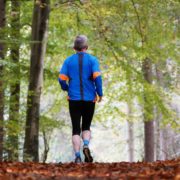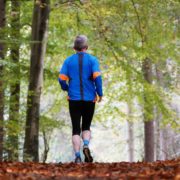Tips to Avoid Injury When You’re Over 50
Most of our clients are aged 50 or above, and staying as active as possible while they age is a big priority for them. As we get older, our bodies do need more care and maintenance to not only age well but avoid injury.
Here are some of my top tips I like to give clients to help them stay active and mobile, avoid injuries, and continue doing everything they love.
1. Keep Moving
You’ll often hear me say: “You don’t get stiff because you get old, you get old because you get stiff.” If you want to stay healthy and mobile, you need to keep moving. One of the biggest concerns I hear from folks aged 50+ is whether they should start modifying what they do because of arthritis. Remember, arthritis is normal. It happens to everyone as they age, and it’s rarely a reason to stop doing your favorite activities. In fact, research has shown that activities like running, when done consistently and with proper form, can prevent knee arthritis! The effects of arthritis worsen when you don’t move, which is when I typically see people having problems. Common “injuries” like meniscal tears and bulging discs are more likely to occur in arthritic joints. But the more active you stay, the less likely you are to be impacted by ailments such as this — and the better your joints will feel.
2. Maintain a Healthy Diet
Both osteoporosis and heart health become bigger concerns as we age, and what you eat can have a direct and positive influence. With osteoporosis, your risk of injury, especially from a fall, becomes much greater. Greens like kale, spinach, and arugula are awesome for your bones, along with citrus fruits, fish, and nuts. These foods help your bones stay strong and durable. According to Health magazine, “The risk of a heart attack climbs for men after age 45 and for women after age 55.” As you enter middle-age, increasing the presence of foods like unsalted nuts, unprocessed oatmeal, raisins, blueberries, and even dark chocolate (over 70% cacao) can help keep your heart healthy. Before making any drastic changes to your diet, especially if you’ve got comorbidities such as diabetes or kidney disease, you’ll want to check with your doctor or dietician. But otherwise, paying attention to your diet can have a big impact on how healthy you keep your heart and bones.
3. Work on your Balance
Balance is one of the first things to go as a person gets older, and it’s one of the most crucial factors in helping you prevent falls and avoid injury. Slips and falls due to poor balance can lead to broken bones and fractures, which become more common and harder to recover from as you age. But if you’re intentional about improving your balance when you exercise, it’s not too late to improve it. While there are many great balance exercises you can do at home, I always recommend incorporating balance strategies with movement and activity. Because rarely do we fall when just standing still. Try standing on one leg when you brush your teeth, place one foot up on a stool when washing dishes, walk around on your toes and heels during commercials. These are really easy strategies to incorporate into your daily living. And of course, activities like walking regularly, Tai Chi, Yoga, and our favorite — Pilates — are also great to promote good balance.
4. Strengthen your core
Having a strong core is beneficial at any age, but especially as you get older. Strong abs, hips and buttocks (all part of your core) help you to sit and stand more upright, prevent back and neck pain, and will help you feel stronger and more confident in just about everything that you do. In our office, our favorite core-strengthening activity is Pilates. We especially love it for folks aged 50+ because it’s easy on your joints and it helps to promote flexibility at the same time. But what I love most about Pilates is that it teaches you how to strengthen your core properly and safely, two important things at any age, not just when you’re over 50. When you know how to properly engage and use your core, you start to incorporate it more into other exercises. Suddenly walking, running, Yoga, and lifting weights all become that much more effective, and you’re far less likely to get injured doing them.
5. Educate Yourself
Knowledge is power, and lack of it, is one of the biggest reasons I see people decreasing their activity levels when there is no reason to. People think that things like arthritis, bulging discs, or a torn meniscus are reasons to decrease or cease certain activities. But that’s not necessarily true! Most of the things I just mentioned are normal occurrences as we age, and having them show up on an x-ray or MRI is not a reason to change something you’ve been successfully doing for years. Plus, regular movement and exercise actually helps these problems. If you’ve got pain, that’s a different story. Talk to an expert who can help you figure out what’s going on, so that you can quickly get back to your activities and not make your pain worse. Whatever you do, try to avoid Dr. Google. It can send you down a rabbit hole and not all the advice you read will apply directly to you.



